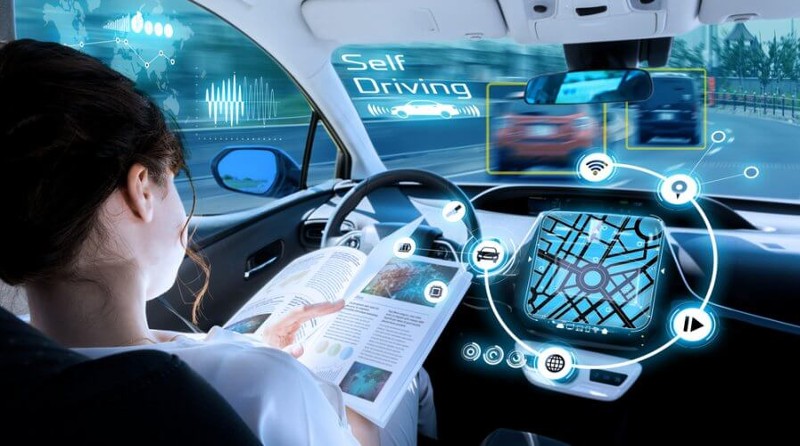
In recent years, the global automotive industry has witnessed significant advancements in technology, particularly in the field of autonomous driving. Among the key technologies driving this revolution is LiDAR, which stands for Light Detection and Ranging.
LiDAR sensors play a crucial role in enabling precise and accurate perception for autonomous vehicles, making them an integral part of the automotive ecosystem. In this article, we will explore the global automotive LiDAR sensors market, its growth drivers, applications, and its impact on the future of autonomous driving.
LiDAR technology utilizes laser pulses to measure distances and create high-resolution 3D maps of the surrounding environment.
In the automotive industry, LiDAR sensors are used to provide real-time, detailed information about the vehicle's surroundings, including the position and movement of objects. As pedestrians, vehicles, and road infrastructure. This data is essential for autonomous vehicles to make informed decisions and navigate safely.
The global automotive LiDAR sensors market is experiencing significant growth, driven by several key factors
The growing interest in autonomous driving has spurred the demand for advanced sensor technologies. LiDAR sensors, with their ability to provide precise 3D mapping and object detection, are essential for autonomous vehicles to operate safely and efficiently.
The continuous development of LiDAR sensor technology has led to more compact, cost-effective, and reliable sensors. Improved range, accuracy, and resolution are making LiDAR sensors a preferred choice for autonomous vehicle manufacturers.
Governments and regulatory bodies worldwide are recognizing the importance of safety in autonomous vehicles. As a result, there is an increasing emphasis on the use of LiDAR technology to enhance the perception capabilities of autonomous vehicles and ensure safe operations.
LiDAR sensors find various applications in the field of autonomous driving
LiDAR sensors enable precise detection and tracking of objects, including pedestrians, cyclists, and vehicles. This information is crucial for autonomous vehicles to navigate complex traffic scenarios and make accurate decisions.
LiDAR sensors help create detailed 3D maps of the surrounding environment, enabling precise localization of the vehicle. This data is essential for autonomous vehicles to understand their position and navigate accurately.
LiDAR sensors provide real-time information about potential obstacles, allowing autonomous vehicles to detect and avoid collisions. The sensors play a crucial role in enabling emergency braking systems to prevent accidents.
LiDAR sensors contribute to advanced driver assistance systems (ADAS) by providing accurate distance and speed measurements. This information enables features such as adaptive cruise control and traffic management systems for smoother and safer driving experiences.
The future of the global automotive LiDAR sensors market looks promising. As autonomous driving technology continues to evolve, the demand for high-performance LiDAR sensors will grow exponentially.
Key areas of development include the miniaturization of sensors, reduction in costs, and the integration of LiDAR technology with other sensor systems. These advancements will further enhance the capabilities of autonomous vehicles, making them safer and more reliable on the road.
LiDAR technology is continuously evolving, paving the way for exciting advancements in the field of automotive sensors. Here are some key areas where future developments are expected:
One significant trend in the future of automotive LiDAR sensors is the miniaturization of the technology. Manufacturers are striving to develop smaller, more compact sensors that can be seamlessly integrated into various parts of the vehicle, such as the grille, side mirrors, or even integrated into the windshield.
This miniaturization process will enable easier adoption of LiDAR sensors in different vehicle models and reduce the overall cost of implementation.
Traditional LiDAR sensors use mechanical spinning components, which can be bulky and prone to wear and tear. However, solid-state LiDAR technology is emerging as a potential solution.
Solid-state LiDAR sensors eliminate moving parts, making them more robust, durable, and reliable.
Additionally, solid-state sensors have the potential for mass production, which could significantly reduce manufacturing costs, making LiDAR sensors more accessible to automakers.
Future LiDAR sensors are expected to witness substantial improvements in range and resolution. By extending the detection range, LiDAR sensors can provide a more comprehensive perception of the environment, enabling autonomous vehicles to detect objects farther away and plan their actions accordingly.
Moreover, higher resolution sensors will offer more precise and detailed 3D mapping, enhancing the accuracy of object detection and recognition.
As the volume of data generated by LiDAR sensors increases, there will be a greater need for advanced data processing capabilities.
Future LiDAR systems are likely to incorporate sophisticated algorithms and artificial intelligence (AI) to analyze and interpret the vast amounts of sensor data. This will enable quicker and more accurate object detection, tracking, and decision-making, enhancing the overall performance and safety of autonomous vehicles.
The cost of LiDAR sensors has been a significant barrier to widespread adoption. However, with advancements in technology and increasing market demand, it is expected that the cost of LiDAR sensors will decrease over time. This reduction in cost will drive the mass adoption of LiDAR technology, making it more accessible to automakers and accelerating the deployment of autonomous vehicles.
The global automotive LiDAR sensors market is revolutionizing the way we perceive autonomous driving. With their ability to provide precise and real-time data about the surrounding environment, LiDAR sensors play a vital role in enabling safe and efficient autonomous vehicles.
As technology continues to advance, the market is expected to grow, driving innovation in the automotive industry and paving the way for a future where autonomous vehicles are commonplace.